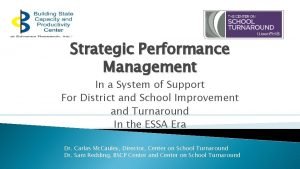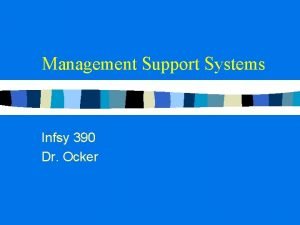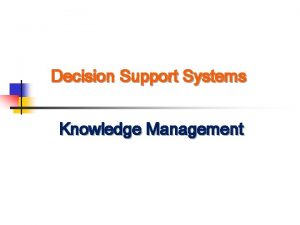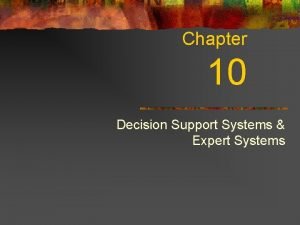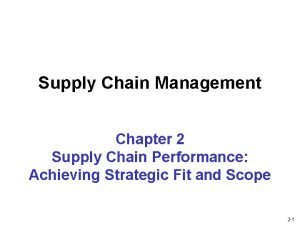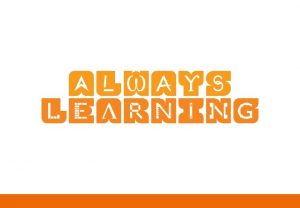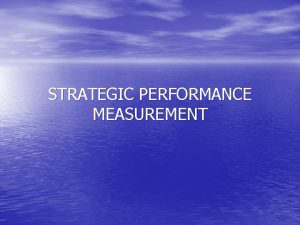Strategic Performance Management In a System of Support



















- Slides: 19

Strategic Performance Management In a System of Support For District and School Improvement and Turnaround In the ESSA Era Dr. Carlas Mc. Cauley, Director, Center on School Turnaround Dr. Sam Redding, BSCP Center and Center on School Turnaround

What is Strategic Performance Management?

SPM combines strategic planning with performance management by creating an organizational structure based on strategies and functions, aligning resources with the structure, addressing human capital and productivity, and establishing performance measures. SPM provides a logically coherent process for linking strategic planning with performance management, ultimately engaging every person in the organization in performance-guided, satisfying work connected to the organization’s mission.

Strategic Performance Management Purpose and Direction Functions and Structures Performance and Innovation

Functions & Structures Processes for Collaboration STUDENT FOCUSED AGENCY FOCUSED

What is a System of Support?

What matters most to Alaina’s success?

It’s really very simple Proximal variables matter most – the people closest to Alaina and what they do And the systems (people) that support them

We are a long way from the student

Maybe a system of support should be like this

System of Support: Helping People Change

Differentiated Supports Differentiation based on : ◦ Student outcome data ◦ Operational performance data Differentiated by: ◦ Intensity ◦ Duration ◦ Kind

What are “Interventions? ” Who intervenes and how? 1. 2. 3. 4. Corrective action Restructuring Turnaround (School Improvement Grants-Models) Take-over

New Paradigm for System of Support? System of Support is an NCLB concept Actually from 1994—Improving America’s Schools Act How does the paradigm change with ESSA? 1. 2. 3. 4. Note term “intervention” similar to “strategy” Prominence of district Evidence-based practices vs. intervention models Other? ?

ESSA: State Accountability and Improvement Indicators for Identification 1. Annual assessments (which may include a student growth measure) 2. High school graduation rates 3. Another indicator for elementary and middle schools, which may be a student growth measure 4. English language proficiency for English learners, and 5. At least one additional indicator of school quality or student success (e. g. school climate/safety, student engagement, educator engagement, postsecondary readiness)

ESSA: Differentiated Support States establish a system to differentiate support for schools classified in several categories. State support will include at least these two types: (1) comprehensive, state-monitored interventions; and (2) targeted, district-led interventions. Comprehensive Support and Improvement Schools (state-monitored interventions) As determined by state indicators at least every three years, these schools are: 1. In the lowest-performing 5% of all Title I schools in the state (or more, at the state’s discretion); and 2. High schools failing to graduate at least two thirds of their students (67% graduation rate). 3. For each school identified for comprehensive support and intervention, the district develop a comprehensive support and intervention plan, based on a school-level needs assessment, and including evidence-based interventions (defined at a high level of rigor). 4. For schools that continue to be identified for comprehensive support and intervention for a number of years, not to exceed four years), the state must determine further intervention, including the option of school transfer with transportation provided by the district and priority given to the lowest-achieving students from low-income families.

Targeted Support and Improvement Schools (district-monitored interventions) 1. Based on student groups that are underperforming on the state indicators. The school will develop a district-approved plan that includes evidence-based interventions (again, at a high level of rigor) and is monitored by the district. 2. Any school in which a student group is below the level used to identify schools for the bottom 5% in the state must be identified for additional targeted support and intervention. Their improvement plans must identify and address resource inequities for these schools. A school that fails to meet exit criteria for targeted support and improvement after a period of time may be reclassified as a comprehensive support and improvement school. Evidence-Based Practices: Evidence-based practices are defined as demonstrating a statistically significant effect on improving student outcomes based on one of three tiers of evidence—strong, moderate, or promising. A fourth category of evidence is practices that demonstrate a rationale for improving student outcomes that is based on high-quality research findings. Intervention and improvement strategies undertaken with school improvement state set-aside funds must meet one of the three more rigorous tiers.

What to do See Handout

Discussion—What would SPM Look Like in an ESSA-Era System of Support? 1. 2. Strategic Performance Management Differentiated System of Support (Diagnosis and Interventions) a) Comprehensive Support and Improvement Schools (State-Monitored Interventions) b) Targeted Support and Improvement Schools (District-Monitored Interventions) c) Other Districts and Schools 3. Four Domains of Rapid School Improvement a) State b) District c) School
 Strategic management performance system
Strategic management performance system Resource based model
Resource based model Cultural aspects of strategy choice
Cultural aspects of strategy choice Performance management and strategic planning
Performance management and strategic planning Bars rating scale
Bars rating scale Performance management vs performance appraisal
Performance management vs performance appraisal Strategic fit vs strategic intent
Strategic fit vs strategic intent Strategic complements definition
Strategic complements definition Management support definition
Management support definition Balanced scorecard meaning
Balanced scorecard meaning Grammatical signals
Grammatical signals Management support system
Management support system Knowledge management decision support
Knowledge management decision support Dss vs expert system
Dss vs expert system An expert system is
An expert system is Decision categories
Decision categories Performance management in network management
Performance management in network management Strategic fit in supply chain management
Strategic fit in supply chain management Strategic e-marketing and performance metrics
Strategic e-marketing and performance metrics Supply chain performance achieving strategic fit and scope
Supply chain performance achieving strategic fit and scope
